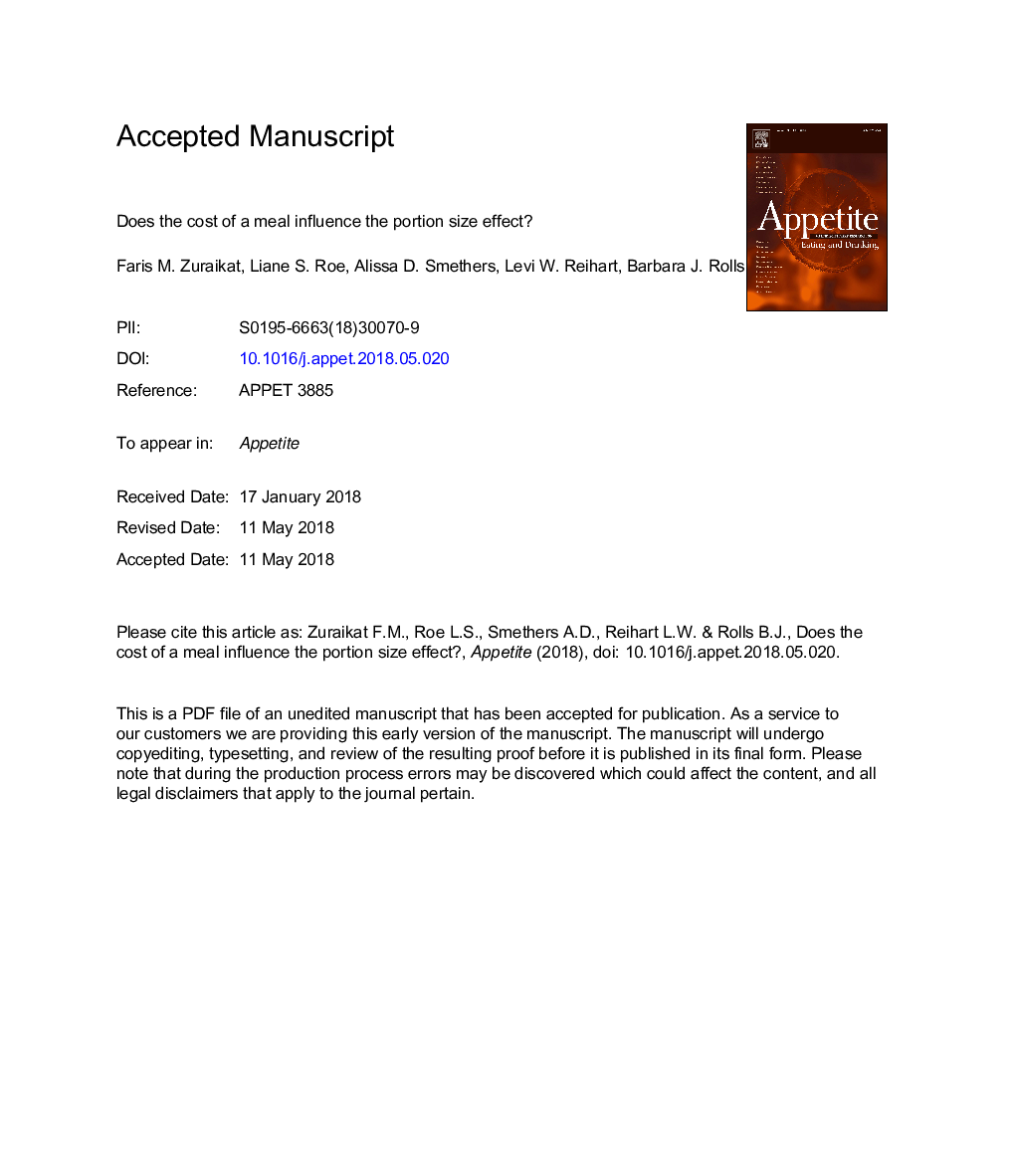| Article ID | Journal | Published Year | Pages | File Type |
|---|---|---|---|---|
| 7305582 | Appetite | 2018 | 33 Pages |
Abstract
Serving larger portions leads to increased intake, but little is known about how the cost of a meal affects this response. Therefore, we tested whether the amount of money paid for a meal influenced the portion size effect at a lunch served in a controlled restaurant-style setting. In a crossover design, 79 adults (55 women; 24 men) came to the lab once a week for 4 weeks to eat a main dish of pasta with side dishes. Across weeks, the meal was varied in two factors: portion size of the main dish (400â¯g or 600â¯g) and cost of the meal (US$8 or $16). At discharge subjects completed questionnaires that assessed behaviors thought to influence the response to portion size and cost. Results showed that the portion size of the main dish had a significant effect on meal intake (Pâ¯<â¯0.0001). The weight of food consumed at the meal increased by 18â¯Â±â¯2% (meanâ¯Â±â¯SEM 83â¯Â±â¯11â¯g) and energy intake increased by 20â¯Â±â¯2% (133â¯Â±â¯16â¯kcal) when the larger portion was served. These effects of portion size did not differ across the two levels of cost (both interactions Pâ¯>â¯0.37) nor did meal cost have significant effects on meal intake (both Pâ¯>â¯0.24). Subject scores for satiety responsiveness did, however, influence the effect of portion size on food intake (Pâ¯=â¯0.0007). Serving larger portions led to increased intake in subjects with lower satiety responsiveness scores (Pâ¯<â¯0.0001), but did not affect intake in those with higher scores. In summary, the effect of portion size on intake in a restaurant-style setting was not influenced by meal cost but was attenuated in individuals higher in satiety responsiveness.
Keywords
Related Topics
Life Sciences
Agricultural and Biological Sciences
Food Science
Authors
Faris M. Zuraikat, Liane S. Roe, Alissa D. Smethers, Levi W. Reihart, Barbara J. Rolls,
